Share

The Delicious Legacy
Pork as medicine in the ancient and medieval world
I've been eternally fascinated with ancient medicine and all the different remedies and potions that medicinal writes were advising to cure all sorts of maladies!
But one "cure" -literally- salted, cured, ham and bacon it was really above all others! Tarikhos -aka salted meat- and any other pork cut was considered light and and nutritious meat.
I wanted to find out how it was used and why!
The theory of maintaining or regaining one’s health through a lifestyle of moderation and balance was called “dietetics.” More than in our days, diet played a role in preventing and curing diseases, and in fact it was one of the main areas of study at medieval medical schools. Not surprisingly, foodstuffs and dishes were seen in much the same way as simple and compound drugs, and like them were classified in accordance with the theory of the four humors, by which was meant a theory of the four bodily fluids. To find out the history of this early scientific theory we must go back to the sixth century B.C., to such Greek philosophers as Anaximenes, Heraclitus, and Thales.
It was Hippocrates, the famous Greek physician, and his followers who around 400 B.C. added to the four qualities of Zeno the four bodily fluids blood, phlegm, black bile, and yellow bile, and formulated a prototype of what came to be known as “humoral theory.”
One of the few remnants of humoral theory that has survived into the twenty-first century; when we describe a person’s temperament today as sanguine, choleric, melancholic, or phlegmatic, we are, in effect, referring to their dominant bodily fluid or humor: blood (sanguis), yellow bile (cholé), black bile (melaina cholé), and phlegm. The Greek physician who was the most prolific medical writer and who influenced medieval medicine more than any other was Galen of Pergamon of the second century A.D. In selecting and harmonizing elements of the humoral theory he found in Plato, Aristotle, Hippocrates, and others, he created a system that was capable of describing the world as a whole, and all inanimate and animate objects in it.
By Byzantine times, the theory of humours was accepted without question by doctors and court alike and even amongst more common people. Foods had to be judged and balanced for their effects on the bodily humours, month by month, hour by hour, and according to individual constitution.
Ancient medicals writers, physicians and philosophers mentioned on this podcast:
Oribasius: https://en.wikipedia.org/wiki/Oribasius
Aetius of Amida: https://peoplepill.com/people/aetius-of-amida
Alexander of Tralles: https://www.penn.museum/sites/expedition/the-life-and-times-of-alexander-of-tralles/
Paul Of Aegina: https://en.wikipedia.org/wiki/Paul_of_Aegina
Anthimus: https://en.wikipedia.org/wiki/Anthimus_(physician)
Many thanks to Pavlos Kapralos for the music!
You can find more of Pavlos's work on his YouTube channel: https://www.youtube.com/channel/UCzgAonk4-uVhXXjKSF-Nz1A
Thanks for listening!
The Delicious Legacy
Support the podcast on Ko-Fi and Patreon for ad-free episodes!
More episodes
View all episodes
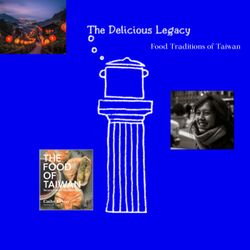
24. Food Traditions of Taiwan -Interview with Cathy Erway
54:25||Season 7, Ep. 24Hello my curious archaeogastronomers!New episode is out for your delight!An interview with food writer Cathy Erway about the foodways and dishes from the beautiful island of Taiwan!Recommendations for the week:The Library of Ancient Wisdom by Selena Wisnomhttps://www.penguin.co.uk/books/443027/the-library-of-ancient-wisdom-by-wisnom-selena/9780241519639The Ottoman History Podcast:https://www.ottomanhistorypodcast.com/The Hungry Historians podcast:https://open.spotify.com/show/2dd70WM8rXd2rMKepkbjwuEnjoy!LoveThom & The Delicious Legacy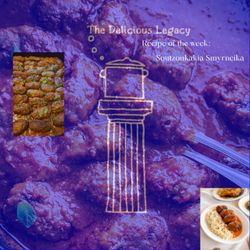
Soutzoukakia Smyrneika (Spicy meat balls from Smyrna)
13:16|Hello!Your recipe of the week on a Saturday is out! And what better dish than a Greek Sunday favourite?Izmir, Smyrni or Smyrna:One city, three names, a shared history of three thousand years! Being “born” in such a place, in the crossroads of trade, our recipe for “Soutzoukakia Smyrneika” or Izmir kofte encompasses spices valuable for trade and meat and ideas from East and West. And thus making a syncretic dish, delicious, luxurious and celebratory.Enjoy!Thom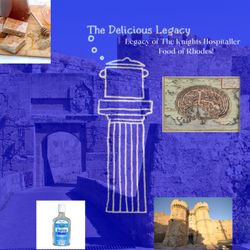
23. Legacy of The Knights Hospitaller - Food of Rhodes!
26:31||Season 7, Ep. 23Hello!Rhodes is a rich history island with a lush landscape and an illustrious past.After the fall of Acre in 1291 CE, the Knights Hospitaller last stronghold in the East Med for the next two centuries was the island of Rhodes.Rhodes is the biggest island of the Dodecanese complex, and place of trade in the eastern Mediterranean for more than three thousand years!What is 'Souma', and 'Melekounia'? And how do the Rhodians use cyclamen in their cooking?Let's find out about here food here!Enjoy!ThomThe Delicious Legacy Podcast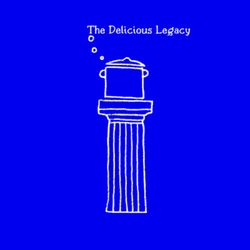
Pork, Chestnut & Chickpea Stew from the Island of Lesvos
08:09|Hello!Happy weekend.Here's our recipe of the week;A Christmas pork stew from the island of Lesvos! I cannot quite shake away the Christmas feeling...! Enjoy!The Delicious Legacy
22. Food, Foreigners and Shakespeare
01:23:09||Season 7, Ep. 22Hello! New episode for all my hungry archaeogastronomers!In Act 2, Scene 2 of the Merry Wives of Windsor Frank Ford says:‘I will rather trust a Fleming with my butter, Parson Hugh the Welshman with my cheese, an Irishman with my aqua-vitae bottle, or a thief to walk my ambling gelding, than my wife with herself.’Why do certain nationalities have close associations with certain foods? And what does this tell us about early modern English attitudes to foreigners? Was this something common across all strata of society?One of the ways to explore these attitudes is to look at how foreigners are represented in plays particularly when it comes to food. I spoke to food historian and fellow podcaster Sam Bilton about this. Sam has recently released a cookbook called Much Ado About Cooking which looks at the food references in Shakespeare’s play.On this episode then the above questions and a lot more regarding kitchen technology and implements of the time, measurements and terminology in the 16th Century, best recipes and dishes are answered. So join us onto another adventure through food and history!Enjoy!The Delicious LegacyRecommendations of the week:The UK Will Soon Be Home To The Largest Oyster Reef In Europe – As Four Million Oysters Are Being Dropped Into The North Sea As Part Of A Restoration Project To Help Restore Marine Ecosystems And Clean Water:https://secretldn.com/uk-home-to-largest-oyster-reef-in-europe-norfolk-coast-restoration-project/#google_vignetteThe importance of being malted: making malt and malt sugars from cereals in the Palaeolithic. https://merryn.dineley.com/2025/12/the-importance-of-being-malted-making.html?m=1The Meaning of Borsch:https://open.spotify.com/episode/1ne63nGnDvTYgT2OFiayzf?si=c0b1449fe848458bLoveThom & The Delicious Legacy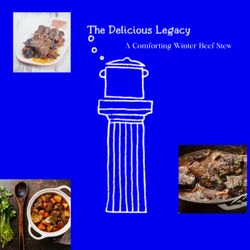
Stocking Filler! Recipe of the week a Comforting Winter Beef Stew
08:37|Hello!Your recipe of the week is out!Recommendations of the week:Sarcophagus found at Church of St. Nicholas could be the tomb of “Santa Claus”:https://www.heritagedaily.com/2024/12/sarcophagus-found-at-church-of-st-nicholas-could-be-the-tomb-of-santa-claus/154084Roman occupation of Britain damaged the population’s health:https://www.newscientist.com/article/2508181-roman-occupation-of-britain-damaged-the-populations-health/On contrarian history:https://going-medieval.com/2025/11/25/on-contrarian-history/Enjoy!Much Love and Happy New Year to all!The Delicious Legacy Podcast
Recipe of The Week Three: Kalymnos Octopus Fritters
06:01|Hello!Happy Christmas!Here's your recipe of the week this time from the beautiful Dodecanese island of Kalymnos!Enjoy!With music from Miltos BoumisLoveThom & The Delicious Legacy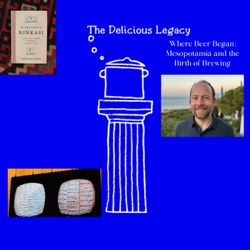
21. Where Beer Began: Is the Mesopotamian Origin Story Correct & The Birth of Brewing
49:49||Season 7, Ep. 21Hello my curious archeaogastronomers!Who were the first beer makers? Why did they even made beer in the first place? Can we even find a Civilization to be the clear winner in this "race"? What's the word for beer in ancient Sumerian?What role the priests and kings plaid in this? Who even drunk beer in the ancient Mesopotamian world? All this and many more questions were buzzing through my mind.On today's episode I have as a guest the author of the book In The Land of Ninkasi: A History of Beer in Ancient Mesopotamia, Tate Paulette.Tate’s book has recently won two awards:Felicia A. Holton Book Award, Archaeological Institute of AmericaThis award is given annually to a writer or writers who, through a major work of non-fiction, represents the importance and excitement of archaeology to the general public. The work should have broad public appeal and be written for an adult lay audience in a clear and engaging style. It should convey the excitement of archaeological discovery accurately and responsibly. It should be well-researched and provide new insight for the general public. https://www.archaeological.org/2026-aia-awards-spotlight-felicia-a-holton-book-award/And he also won the Nancy Lapp Popular Book Award, American Society of Overseas Research:This award is presented to the author/editor of a book published in the last two years that offers a new synthesis of archaeological or textual evidence from the Ancient Near East and Eastern Mediterranean intended to reach an audience of scholars as well as students and the broader public.https://www.asor.org/about-asor/honors-awards/previous-award-recipients/Alright! Time for my delightful and interesting I hope recommendations for this week are the following:Disco scallops:Here’s a link:https://www.discoscallops.co.uk/A Spirit Never to Betray” before tequila and mescal there was another: David Lauer investigates the fate of a spiky ancient desert plant called sotol, and its alliance with generations of artisans who distil a fiery spirit from its heart.https://dark-mountain.net/a-spirit-never-to-betray/And finally the website https://www.ukrainer.netA community and organisation that has been researching Ukraine and the Ukrainian context since 2016, telling stories to Ukrainian audiences and broadcasting them to the world in dozens of languages.xEnjoy!Photo credits : Book Tate Paulette, Cuneiform Tablets Justin Kase Conder, Portrait Kathryn GrossmanThom & The Delicious Legacy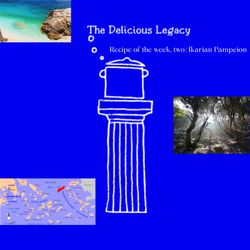
Stocking fillers: Recipe of the week, two: Ikarian Pampeion
06:51|Hello!Every Saturday in The Delicious Legacy podcast your freshest "stocking filler" recipe of the week is out!This time I’m travelling to the delightful island of Ikaria in the Western Aegean sea!With a simple one pot veg recipe!If you want to know more about Ikaria, read my Patreon post here:https://www.patreon.com/posts/ikaria-island-of-115744979Music by Milts BoumisLove,The Delicious Legacy